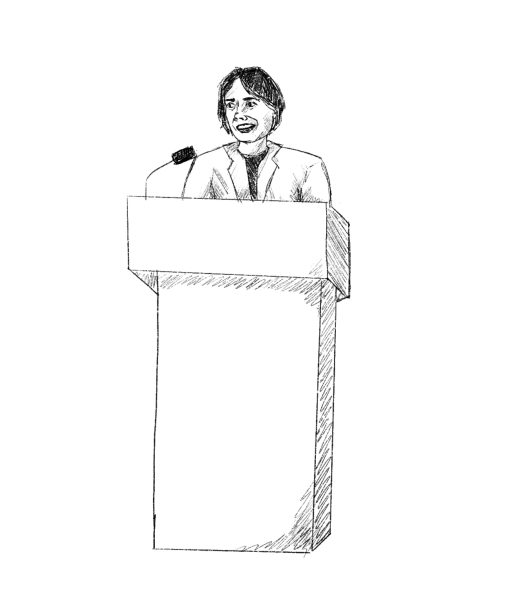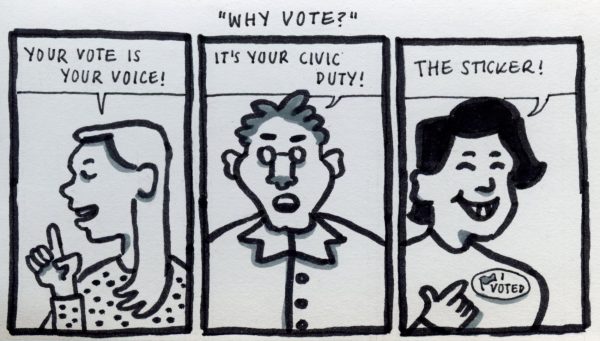“Restoring a sense of health to our democracy:” Ranked-choice voting bill works its way through Washington Legislature
March 11, 2021
In future elections, Washington voters may be able to rank candidates on their ballots. The state’s Ranked Choice Voting Local Option Bill, or HB 1156, would allow local jurisdictions to adopt ranked-choice voting (RCV). This method, as opposed to the current plurality system, allows voters to rank candidates in order of preference on their ballot.
In a RCV election, first-choice votes are tallied and a candidate wins if they claim a majority of first-choice votes. If no candidates possess a majority, the candidate with the lowest number of first-choice votes is eliminated, and votes for the eliminated candidate are transferred to the second-choice candidate on those ballots. This process of retallying continues until a candidate reaches the threshold necessary to win the race.
Lisa Ayrault, Executive Director of the pro-RCV advocacy group FairVote Washington, listed the merits of RCV:
“Voters will have a stronger voice when they vote. [RCV] makes your vote matter more, because if your first choice can’t win, your vote will still count for your second choice,” Ayrault said. “A great example of that is the presidential primary back in March of 2020, when many voters in Washington State, nearly 400,000 in fact, voted for candidates who dropped out just before election day. So those votes were effectively wasted. And in five other states in this country [with RCV], voters were able to list a backup choice: if their first choice dropped out, your vote would still count for the next choice.”
Research has shown that RCV voting makes elections more issue-based by decreasing negative campaigning, increasing civility, and incentivizing broader outreach. Even if a voter supports an opponent, candidates are still incentivized to win support in the form of a second-choice ranking.
Ben Chapman, Communications Manager for FairVote Washington, says RCV would change how we see one another in the political world.
“Instead of spending all your money on negative ads and talking about why every other candidate is bad, candidates under RCV have to campaign on ideas and build consensus around their campaign,” Chapman said. “It forces candidates to reach out beyond their base.”
According to data from RCV elections, this electoral method also increases parity in the likelihood that women and people of color win elections, presumably because it does away with the question of ‘electability’ that so often plagues women and people of color. Under RCV, voters can name their backup choices rather than worrying about ‘throwing away their vote’ for a candidate who won’t win but who best represents their views.
Opponents of the bill, however, argue that RCV is “complex and litigious” in a time when voter confidence is threatened.
RCV supporters like Ayrault argue that the idea behind RCV is simple and increases engagement in elections.
“The clear result is that voters do understand RCV,” she said. “In places that are using it, voters overwhelmingly want to keep it. It is a simple idea. Ask any small child ‘what’s your favorite toy? And if you can’t have your favorite, what’s your next favorite?’”
Even so, transitioning to a different system of voting would require voter education. Ayrault notes that even if the bill passes, nobody is forced to rank their choices. If a voter’s jurisdiction decides to use RCV, individuals could still elect to pick just one candidate in every race.
While RCV has a long history, there has been a recent push in state legislatures the last few years to adopt the method. In 2016, Maine passed an act requiring RCV in statewide and federal elections. Alaska voters recently approved a ballot measure that will require RCV in future state and federal elections. One county in Oregon uses RCV, and municipalities in California, Colorado, Maine, Maryland, Massachusetts, Minnesota, New Mexico and New York use RCV in some form.
Claire Maurer, a senior politics major, has voted in RCV elections in her home state of Maine. She is not surprised that HB 1156 has gained traction and emphasized the potential the bill has to lessen bipartisanship by enabling voters to support independent political parties.
“There’s already such a two-party system engrained in the stone of many places, and RCV doesn’t solve that,” Maurer said. “But if there’s already a movement toward some independent involvement it can boost [third parties] and add that to the democratic process of voting.”
Washington’s HB 1156 has already cleared two House committees — the State Government & Tribal Relations Committee and the Appropriations Committee — with bipartisan votes of support. The bill now awaits a full floor vote before proceeding to the Senate, and eventually to the desk of Governor Inslee.
Ayrault noted the breadth of support for the bill and that advocacy groups are pointing to RCV as the single most impactful way to immediately address polarization and dysfunction in government.“[Supporters] recognize that this is a reform that is foundational to restoring a sense of health to our democracy and functionality to our government. This is not an urban/rural or a Democratic/Republican issue in our state. It has broad support across all constituencies, across ideological lines, and we have supporters in every county, every legislative district, all over the state.”









R P Collins • Mar 16, 2021 at 8:02 am
Thanks for this encouraging update. Have you noticed disparaging remarks about ranked-choice voting from pollsters? I have, but not enough to infer a trend. Their objections are about how RVC would complicate their forecasting. It’s in their interest for the electorate to behave predictably. Partisanship increases predictability.
Liz Main • Mar 11, 2021 at 1:08 pm
Thanks for spotlighting RCV. I’m all in favor of being able to choose the candidate I really want instead of being forced to pick the candidate I think has the best chance of winning.